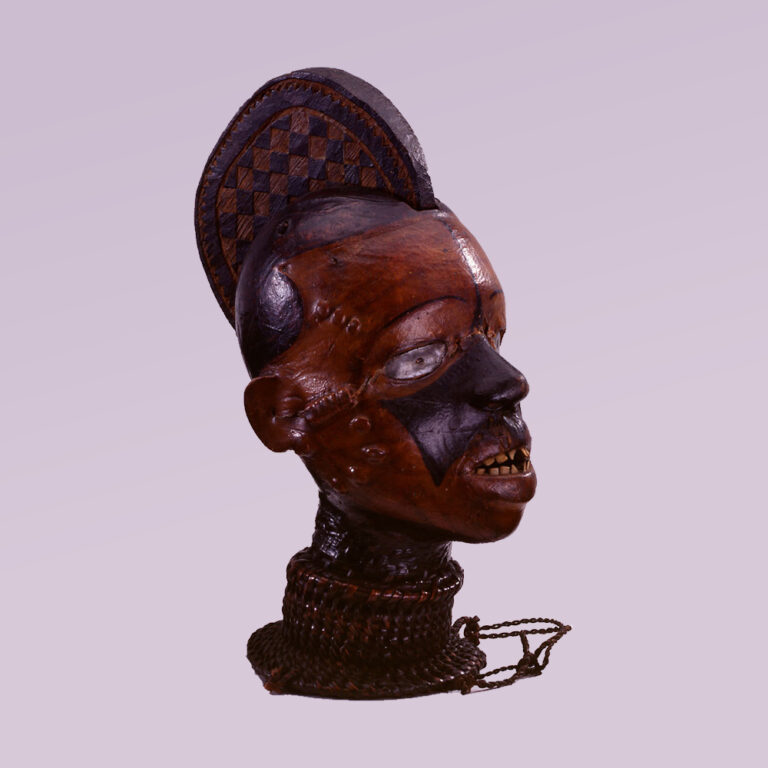Summary of results
The museum’s archive is not very systematized, but it contains all the documentation on the acquisition of the object, including the purchase, transport, and customs clearance. The piece was acquired at the Arts Primitifs gallery in Paris in 1984, passed into the private collection of Colomer Munmany, and arrived at the museum in 1996 with the rest of Colomer Munmany’s private collection, which makes up the museum’s collection. According to the Arts Primitifs documentation, the piece dates from the 19th century (guaranteed to be 100 years old in 1984).
We have found no information about the previous acquisition by Arts Primitifs. The gallery, however, was owned by Hélène Leloup and her husband, Philip Leloup.
Chronological reconstruction of provenance
The piece was bought by Colomer Munmany at the Arts Primitifs gallery in Paris in 1984. Like much of the Colomer Munmany collection, it was donated to the Government of Catalonia in 1991. It entered the Leather Art Museum of Vic the year it was founded, in 1996.
The Arts Primitifs gallery was run by Hélene Leloup, a prominent collector of African art who travelled the continent from the late 1950s.
Estimation of provenance
Current Nigeria, although it could also be from Cameroon. Hélène Leloup, who may have been the collector of the piece, made several trips to West Africa. The Ekoi people straddle both states. The MAPV’s inventory lists some thirty objects that may have come from the Ekoi or Ekpokpa people, the origin of which is listed as Cameroon or Nigeria. These objects were acquired from the Leloup and Duperrier collections in Paris at the end of the 1980s and during the 1990s. Some pieces were even purchased during the first decade of the 2000s, once the museum began to function as such in the old Convent del Carme building.
Possible alternative classifications
It would be interesting to investigate the different Ekoi names for these objects (depending on ritual use, area, period, etc.). On the other hand, it would be advisable to remove the term Ekoi ‘tribe’ that appears on one of the panels in the museum and replace it with a more appropriate expression.
Complementary sources
Albareda i Salvadó, Joaquim (1992). La industria del curtido en Vic en el marco de la sociedad contemporánea osonense (1746-1939) (I). Vic: Colomer Munmany.
Bentor, Eli (2002). Spatial continuities: Masks and cultural interactions between the Delta and Southeastern Nigeria. African Arts, 35(1), 26-93. <http://www.jstor.org/stable/3337824>.
Nicklin, Keith (1974). Nigerian skin-covered masks. African Arts, 7(3), 8-92. <https://doi.org/10.2307/3334855>.

